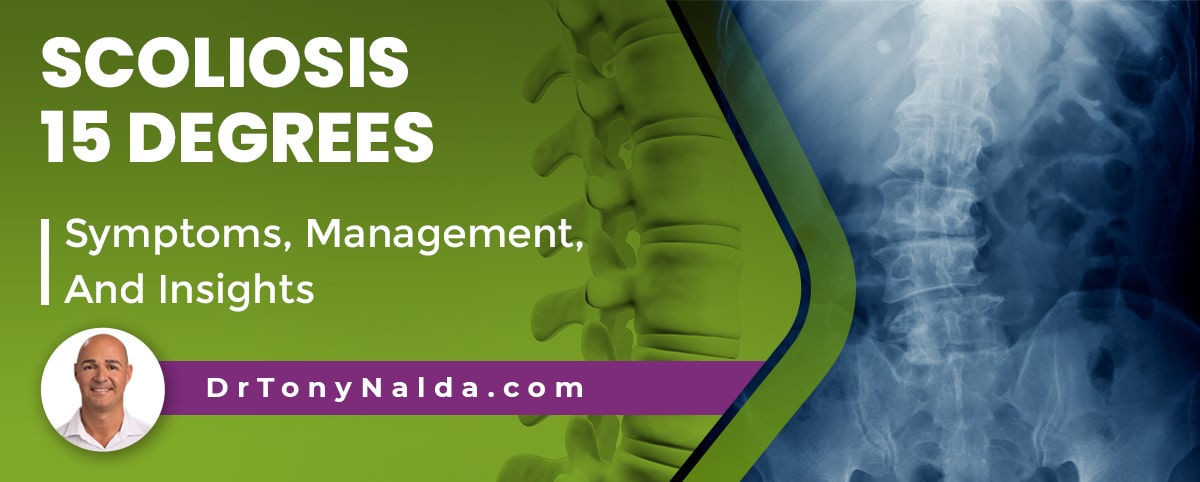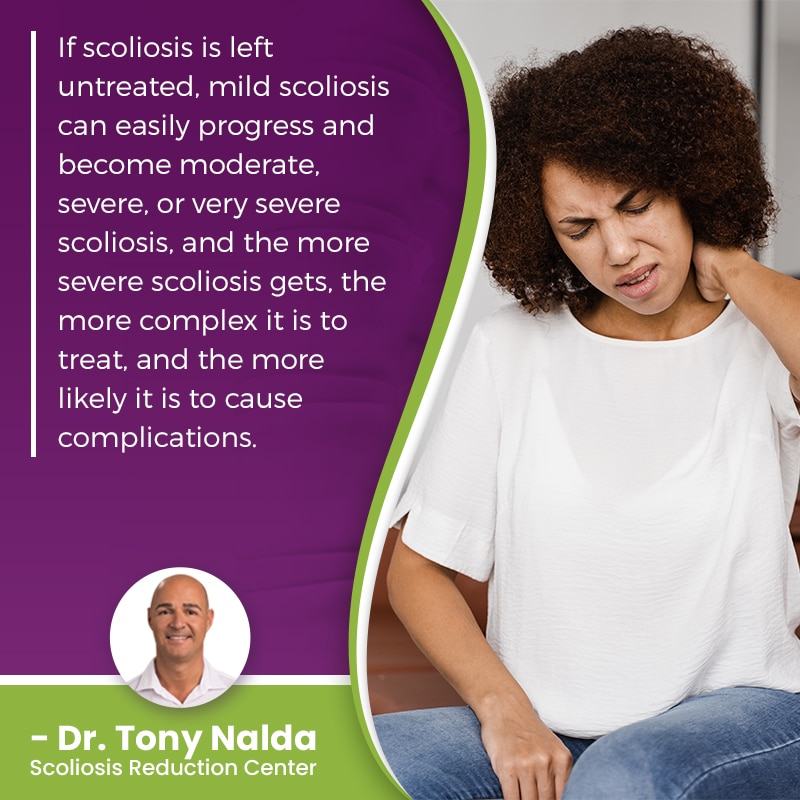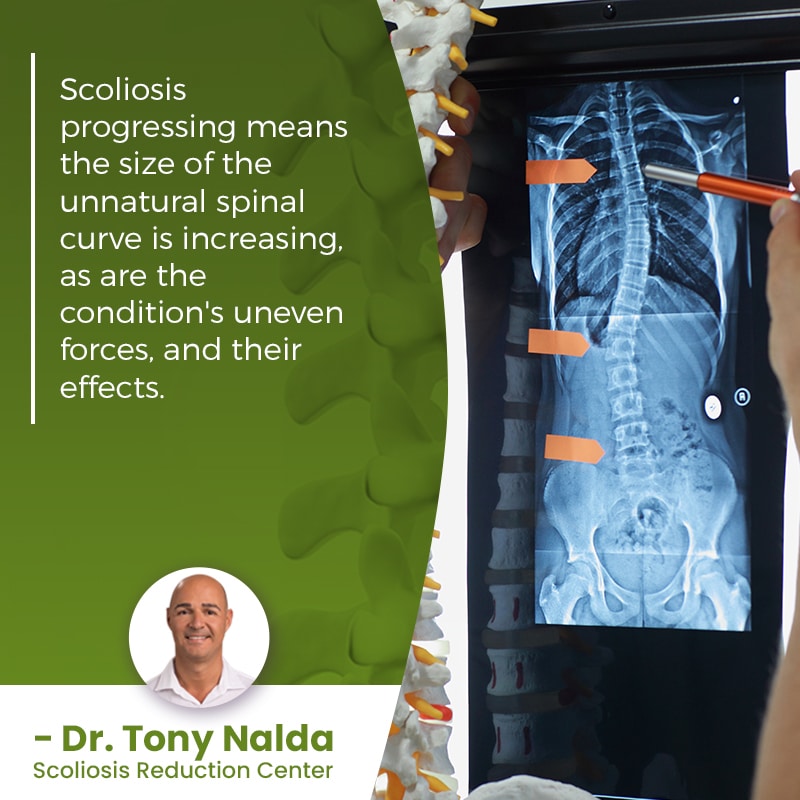Scoliosis 15 Degrees: Symptoms, Management And Insights

No two cases of scoliosis are the same; the complex nature of scoliosis necessitates a customized treatment approach, and a patient's Cobb angle measurement determines the severity of their condition, and is also needed to confirm a diagnosis of scoliosis. Continue reading to learn more about the different severity levels of scoliosis.
There are different degrees of scoliosis, and that means different severity levels. Condition severity is an important piece of information that treatment plans are shaped around, and as a progressive condition, scoliosis severity changes over time. A 15-degree scoliosis is classified as mild scoliosis.
Part of diagnosing scoliosis involves comprehensive assessment so conditions can be further classified, and scoliosis severity is determined during X-ray.
Table of Contents
Diagnosing and Classifying Scoliosis
In order to reach a diagnosis of scoliosis, a number of parameters have to be met.
Scoliosis involves the development of an unnatural sideways-bending and rotating spinal curve, and this means the spine, its surrounding muscles and nerves, and the entire body is being exposed to a lot of uneven forces.
The spine doesn't just allow us to stand upright and practice good posture, it also facilitates a wide range of flexible movement, and the spinal cord within works with the brain to form the body's central nervous system (CNS).
The central nervous system is a vast communication network that facilitates brain-body communication, and an unnatural spinal curve can also affect the spinal nerves and disrupt that communication.
Scoliosis treatment will vary based on a number of important patient/condition variables: patient age, curvature location, condition type, and condition severity.
Important variables are what conditions are classified around, and condition severity is determined by a person's spinal curvature degree.
Cobb Angle Measurement: What it Means
In order to reach an official diagnosis of scoliosis, a parameter that has to be met is the curvature size; in order to be considered a true scoliosis, the curve has to have a minimum Cobb angle measurement of 10 degrees.
A patient's Cobb angle measurement is needed to diagnose scoliosis, and also to classify the condition based on its severity.
Cobb angle is determined during a scoliosis X-ray and involves drawing lines from the tops and bottoms of the curve's most tilted vertebrae at its apex, and the resulting angle is expressed in degrees.
The higher the Cobb angle, the more severe the condition, and the more likely it is to cause noticeable symptoms:
- Mild scoliosis: Cobb angle measurement of between 10 and 25 degrees
- Moderate scoliosis: Cobb angle measurement of between 25 and 40 degrees
- Severe scoliosis: Cobb angle measurement of 40+ degrees
- Very-severe scoliosis: Cobb angle measurement of 80+ degrees
Now what's important to understand about a 15 degree curve, and any scoliotic curve for that matter, is that as a progressive condition, where a scoliosis is at the time of diagnosis doesn't mean that's where it will stay.
How Bad Can Scoliosis Get?
 If scoliosis is left untreated, this means allowing the unnatural sideways spinal curve to progress unimpeded, and this means allowing it to increase in size over time; its progressive nature is to do so.
If scoliosis is left untreated, this means allowing the unnatural sideways spinal curve to progress unimpeded, and this means allowing it to increase in size over time; its progressive nature is to do so.
So scoliosis that's diagnosed as mild at 15 degrees might not cause many noticeable symptoms; in fact, most patients are diagnosed with moderate scoliosis because it's when conditions progress from mild to moderate scoliosis that patients' symptoms tend to become noticeable enough to bring them in for assessment/diagnosis.
The most important thing to understand about mild scoliosis is that if a patient has been diagnosed while mild, early detection has been achieved, and for those whose conditions are diagnosed early in the progressive line, if met with proactive treatment, there are fewer limits to what can be achieved.
While I can never give treatment guarantees, early detection and intervention are associated with treatment success.
A scoliosis diagnosis means an important decision has to be made, one that can have life-long consequences; as a progressive condition, scoliosis is incurable, but it can be highly treatable.
How a diagnosis is responded to with treatment is key. Scoliosis is going to be at its most responsive while mild, while the curve is small, simpler to treat, and before the body has had ample time to adjust to the unnatural spinal curve's presence.
If scoliosis is left untreated, mild scoliosis can easily progress and become moderate, severe, or very severe scoliosis, and the more severe scoliosis gets, the more complex it is to treat, and the more likely it is to cause complications.
Scoliosis severity is also affected by the type of scoliosis in question. The majority of scoliosis cases are idiopathic scoliosis, meaning not clearly associated with a single-known cause, and this accounts for 80 percent of known diagnosed cases, and the remaining 20 percent are associated with known causes: neuromuscular scoliosis, degenerative scoliosis, and congenital scoliosis.
The condition's most prevalent type of scoliosis overall is adolescent idiopathic scoliosis, diagnosed between the ages of 10 and 18, so let's talk about what a diagnosis of a 15-degree scoliosis means for an adolescent.
Mild Adolescent idiopathic Scoliosis Treatment
As an idiopathic condition, we don't fully understand what triggers the initial onset of scoliosis in adolescents, but we do know what triggers its progression: growth and development.
Adolescents are in, or are entering into, the stage of puberty, so the rapid and unpredictable growth spurts put this age group at risk for rapid-phase progression, and this is why proactive treatment, even with mild conditions, can be so beneficial.
When treating adolescent idiopathic scoliosis, a focus is on continuous monitoring of how the spine is responding both to growth and treatment; the goal is to achieve a significant curvature reduction and hold it there despite the constant trigger of growth.
Treating scoliosis while mild means the spine is likely to be at its most responsive.
Scoliosis progressing increases spinal rigidity, making it less responsive to treatment, and also making it difficult for some patients to perform certain therapeutic exercises that are key to treatment.
 Scoliosis progressing means the size of the unnatural spinal curve is increasing, as are the condition's uneven forces, and their effects.
Scoliosis progressing means the size of the unnatural spinal curve is increasing, as are the condition's uneven forces, and their effects.
When talking about adolescent idiopathic scoliosis and how scoliosis affects children, the main effect is postural deviation, and this can involve:
- Uneven shoulders
- Uneven shoulder blades
- The development or a rib cage arch
- Uneven hips
- Arms and legs that hang at different lengths
Additional changes to watch out for include disruptions to balance, coordination, and gait.
Scoliosis isn't commonly painful for children because it doesn't become a compressive condition until skeletal maturity has been reached, and this is why pain management is a focus of treatment for adult scoliosis, but not when treating childhood scoliosis.
If a 15 degree curve is left to progress, it's likely to become moderate, and this is when postural changes tend to become overt enough to lead to assessment, diagnosis, and treatment.
When it comes to treating adolescent idiopathic scoliosis, conservative treatment offers a non-surgical option that combines condition-specific chiropractic care, physical therapy, corrective bracing, and rehabilitation to impact conditions on every level.
Those who choose to follow traditional scoliosis treatment are commonly funnelled towards spinal fusion surgery, and this is an invasive, costly, and risky procedure that should be considered carefully, and the reality is that many cases of scoliosis don't require surgical treatment.
Conclusion
So as a progressive spinal condition, curve progression is virtually guaranteed to occur over time, and this is why when treatment is started can sometimes be as important as the type of treatment started.
Not being proactive and starting treatment as close to the time of diagnosis as possible is wasting valuable treatment time, and here at the Scoliosis Reduction Center, my patients benefit from a modern conservative chiropractic-centered treatment approach.
Conservative treatment is beneficial because it's far more effective to proactively work towards preventing progression and increasing condition effects, than it is to attempt to reverse those effects once they're established.
When proactive treatment disciplines are applied as close to the time of diagnosis as possible, when conditions are at their mildest and most responsive, scoliotic curves can be reduced on a structural level through chiropractic care and adjustments; physical therapy can help increase core strength so the spine's surrounding muscles can optimally support it.
Corrective bracing can help by pushing the spine into a corrective position, and rehabilitation can involve continued chiropractic care and a series of custom-prescribed exercises so patients can establish a home-rehabilitation program to further heal and stabilize the spine.
The bottom line is that scoliosis that's treated proactively has the best chance of responding positively, and this means that curve severity is reduced on a structural level and the need for invasive spinal surgery is avoided.
Dr. Tony Nalda
DOCTOR OF CHIROPRACTIC
After receiving an undergraduate degree in psychology and his Doctorate of Chiropractic from Life University, Dr. Nalda settled in Celebration, Florida and proceeded to build one of Central Florida’s most successful chiropractic clinics.
His experience with patients suffering from scoliosis, and the confusion and frustration they faced, led him to seek a specialty in scoliosis care. In 2006 he completed his Intensive Care Certification from CLEAR Institute, a leading scoliosis educational and certification center.
About Dr. Tony Nalda
 Ready to explore scoliosis treatment? Contact Us Now
Ready to explore scoliosis treatment? Contact Us Now





